Ever felt overwhelmed by the complexities of your HVAC system? You’re not alone. Many homeowners and technicians struggle with understanding how pressure, heat, and the refrigeration cycle work together to keep your space comfortable. This guide will break it down in a way that’s easy to grasp, so you can optimize your system’s performance.
Think of it like a coffee chat—simple, relatable, and packed with insights. For example, just as your coffee cools down when left out, the refrigeration process relies on heat exchange to maintain the desired temperature. The cycle involves four key components: the compressor, condenser, metering device, and evaporator, each playing a vital role in the process1.
By the end of this guide, you’ll have actionable tips to improve efficiency and reduce energy costs. Let’s dive in and make sense of it all!
Key Takeaways
- Learn how pressure and heat impact your HVAC system’s performance.
- Understand the four main components of the refrigeration cycle.
- Discover practical tips to optimize your system’s efficiency.
- Gain insights into common challenges and how to address them.
- Explore the role of modern metering devices in controlling refrigerant flow.
Introduction: Navigating the HVAC Refrigerant Maze with Confidence
Your HVAC system is more than just a machine—it’s a complex network of components working together to keep your home comfortable. Understanding how it operates can feel overwhelming, but breaking it down into simple steps makes it manageable. Think of it like brewing the perfect cup of coffee: every step matters, and precision is key2.
What Does “Refrigerant State Guide” Mean for Your Home System?
A “refrigerant state guide” helps you understand how your HVAC system manages heat and pressure. It’s like a roadmap for the cycle that keeps your home cool or warm. Without this knowledge, even small changes in refrigerant behavior can disrupt the entire system.
For example, inconsistent airflow is a common issue that can stem from problems with air ducts, filters, or vents2. Addressing these issues early ensures your system runs smoothly and efficiently.
How a Coffee Chat with an Expert Can Demystify HVAC Pressures
Just as a casual chat over coffee can simplify complex topics, talking to an HVAC expert can make pressures and cycles easier to grasp. They can explain how the components work together, much like the precision of a coffee brew. For instance, thermal imaging can identify inefficiencies, enhancing your system’s performance2.
Proactive maintenance, like regular filter inspections and thermostat calibration, can prevent unexpected issues2. This approach not only saves money but also extends the life of your HVAC system.
Ready to dive deeper? Let’s explore how refrigerant pressures impact your system’s efficiency in the next section.
Understanding Refrigerant Pressures and Their Impact on HVAC Efficiency
Pressures in your HVAC system might seem like a technical detail, but they’re the backbone of efficiency. Think of it like adjusting the water flow in a coffee machine—too much or too little, and the brew is ruined. Similarly, the balance between high-side and low-side pressures ensures your system runs smoothly.
Why High-Side and Low-Side Pressures Matter
High-side pressure occurs when the liquid refrigerant is compressed, while low-side pressure happens during evaporation. These distinctions are crucial because they determine how effectively your system transfers heat3.
For example, condensing pressure is the point where the refrigerant changes from vapor to liquid, typically measured between the compressor’s discharge valve and the metering device3. On the other hand, evaporating pressure is where the refrigerant changes back to vapor, measured between the metering device outlet and the compressor3.
How Condensing and Evaporating Pressures Affect System Performance
The metering device plays a key role in managing the flow of refrigerant. It ensures the right amount of liquid enters the evaporator, maintaining the correct temperature and state throughout the system3.
Pressure drops due to line and valve friction can affect readings. Technicians should measure as close to the condenser or evaporator as possible for accurate results3.
| Pressure Type | Location | Function |
|---|---|---|
| High-Side | Compressor to Metering Device | Compresses refrigerant into liquid |
| Low-Side | Metering Device to Compressor | Evaporates refrigerant into vapor |
Understanding these pressures helps you optimize your system’s performance. Just like adjusting a coffee machine’s flow, getting the balance right ensures efficiency and longevity.
The Heart of the Refrigeration Cycle: Key Components in Your HVAC System
The magic of cooling your home begins with a few critical components. These parts work together like a well-oiled machine, ensuring your space stays comfortable. Let’s explore the roles of the compressor, condenser, metering device, and evaporator in detail.
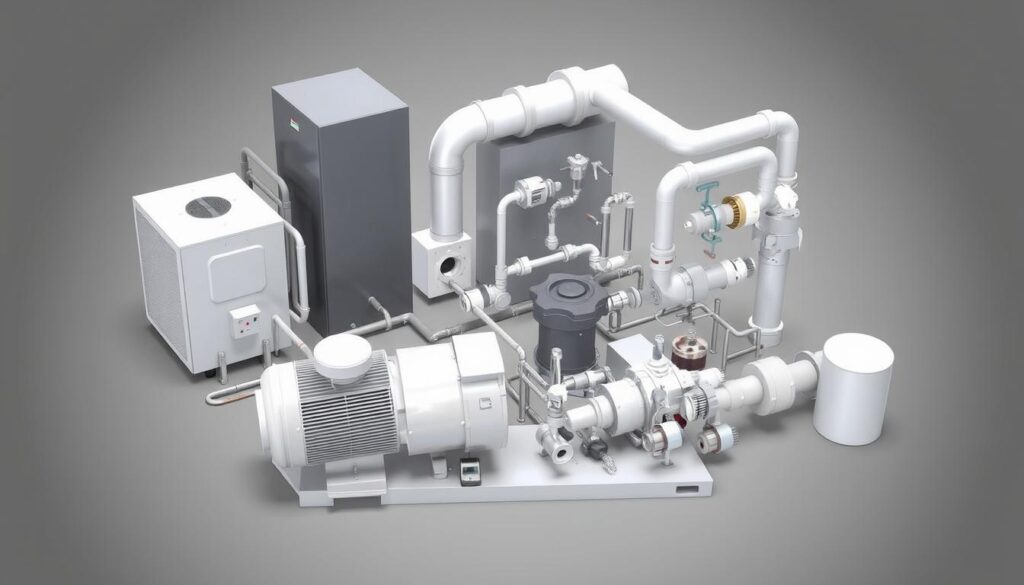
Exploring the Roles of the Compressor, Condenser, and Metering Device
The compressor is the heart of the system. It pressurizes and circulates the refrigerant, transforming it from a low-pressure gas to a high-pressure heated gas4. Without it, no cooling would occur. Think of it as the engine that keeps everything moving.
Next, the condenser steps in. It releases heat into the outside air, turning the refrigerant from gas to liquid5. Imagine it like cooling a piping hot coffee—it’s all about heat exchange.
The metering device plays a precision role. It regulates the flow of refrigerant, ensuring the right amount enters the evaporator4. This step is crucial for maintaining the correct temperature and phase changes.
What Makes the Evaporator the Unsung Hero of Cooling
The evaporator is where the cooling magic happens. It absorbs heat from the indoor air, turning the liquid refrigerant back into gas5. This process ensures a refreshing cooling effect, making it the unsung hero of your HVAC system.
Visualize the air moving through these components. The compressor powers the cycle, the condenser releases heat, the metering device regulates flow, and the evaporator cools your space. Together, they create a seamless process that keeps your home comfortable.
Examining Refrigerant Conditions: Saturated, Superheated, and Subcooled Explained
Getting the most out of your HVAC system starts with understanding its inner workings. One key aspect is the condition of the refrigerant—whether it’s saturated, superheated, or subcooled. These states directly impact how efficiently your system operates, much like the precision needed to brew the perfect cup of coffee.
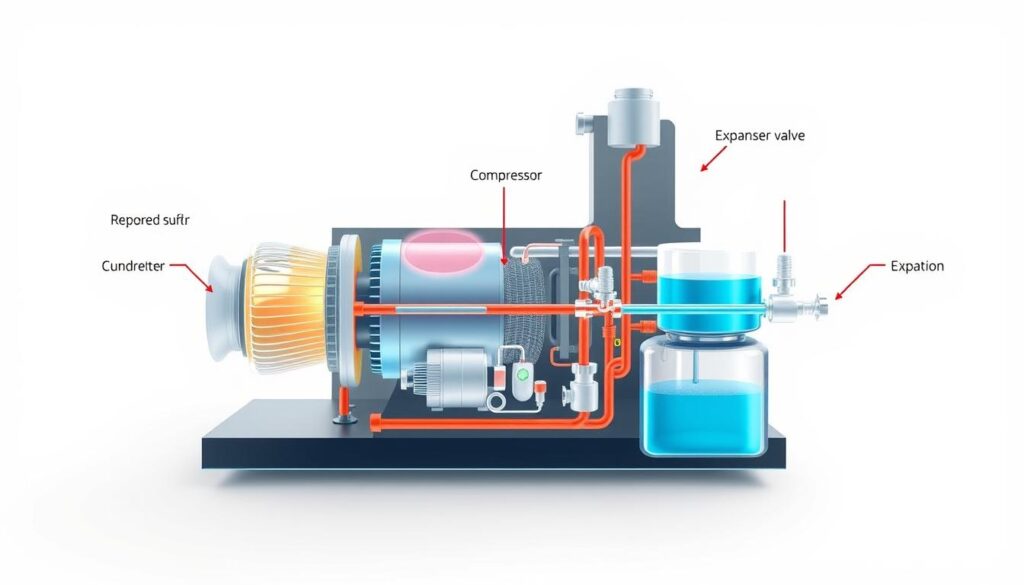
How Saturated Conditions Influence Temperature-Pressure Relationships
Saturated conditions occur when the refrigerant is at its boiling point, transitioning between liquid and vapor. This balance is crucial because it determines the temperature and pressure levels in your system6. For example, water boils at 212°F at sea level, and similarly, each refrigerant has its own saturation temperature6.
When the refrigerant is saturated, it’s in a state of equilibrium. This means it’s ready to absorb or release heat efficiently, ensuring your system maintains the desired temperature7. A reliable metering device ensures the right amount of refrigerant enters each stage, optimizing performance6.
Understanding the Importance of Superheat and Subcooling in Your System
Superheat occurs when the refrigerant is heated above its boiling point, turning it into a gas. This is essential for preventing liquid from entering the compressor, which could cause damage8. For instance, if water is heated to 213°F, it’s superheated by 1°F6.
Subcooling, on the other hand, happens when the refrigerant is cooled below its saturation temperature in liquid form. This ensures only liquid enters the evaporator, improving efficiency7. Both superheat and subcooling are critical for maintaining the right balance in your heat pump system8.
Regular monitoring of pressure refrigerant levels and pump actions is key to sustaining system performance. By understanding these conditions, you can ensure your HVAC system runs smoothly and efficiently, just like a well-tuned machine7.
The Refrigeration Cycle in Action: From Compression to Evaporation
Ever wondered how your air conditioning system keeps your home cool? It’s all about the process of moving energy through a carefully designed cycle. Let’s take a step-by-step tour of this fascinating journey, from compression to evaporation.
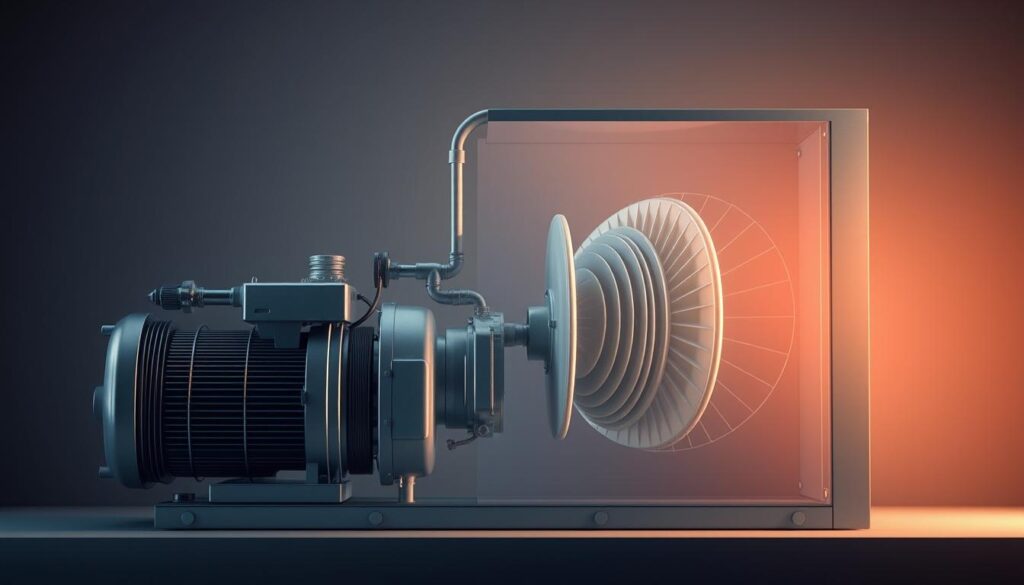
Step-by-Step Overview of the Refrigerant’s Journey
The cycle begins with the compressor, the powerhouse of your system. Here, the refrigerant is compressed into a high-pressure gas, concentrating energy for the next stage9. Think of it like squeezing a sponge—every bit of potential is harnessed.
Next, the refrigerant moves to the condenser. This component releases heat into the outside air, turning the gas into a liquid10. It’s like cooling a steaming cup of coffee, where heat is exchanged to achieve the desired state.
The liquid refrigerant then flows through the metering device, which regulates its flow into the evaporator9. This step ensures the right amount of refrigerant enters, maintaining the system’s balance and efficiency.
Finally, the evaporator absorbs heat from your indoor air, turning the liquid back into a gas10. This process creates the cooling effect that keeps your home comfortable. It’s the final act in a seamless performance of energy transformation.
Each step in this cycle is crucial, much like the precision needed to brew the perfect cup of coffee. By understanding these stages, you can appreciate the intricate process that keeps your air conditioning system running smoothly9.
Keeping Up with HVAC Refrigerant Transitions and Industry Regulations
Staying ahead of HVAC industry changes can save you time and money. The shift to new refrigerants is reshaping how systems operate and how you maintain them. Understanding these transitions helps you make informed decisions for your home or business.
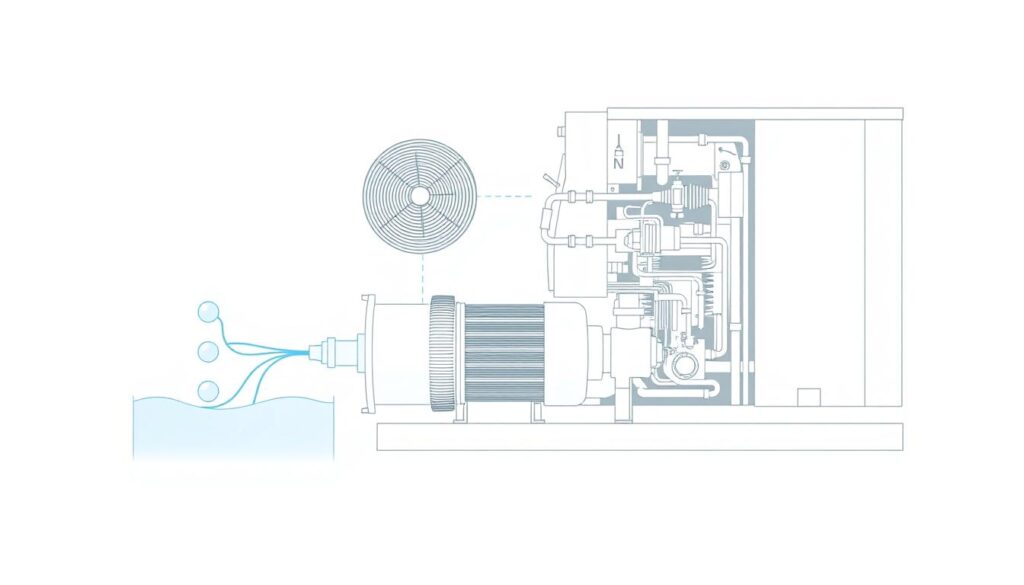
What New Refrigerant Replacements Mean for Your Air Conditioner Maintenance
The industry is moving away from R-410A, a common substance used in cooling systems. Starting January 1, 2025, new HVAC systems using R-410A will no longer be manufactured. This change is driven by EPA regulations aimed at reducing environmental impact11.
New refrigerants like R-454B and R-32 are designed to have lower global warming potential (GWP). These different refrigerant options are more sustainable but require specialized handling due to their mildly flammable nature12.
If your system uses R-410A, you’ll need to plan for future maintenance. Parts and repairs may become more expensive as production decreases. Upgrading to a newer system can improve efficiency and reduce long-term costs13.
How Environmental Impact and Global Warming Potential Affect Your Choices
Environmental concerns are driving the shift to new refrigerants. R-410A has a GWP of over 2,000, making it significantly more harmful than carbon dioxide13. Newer options like R-454B have a much lower GWP, aligning with global efforts to combat climate change.
These changes also impact your choices when servicing or replacing your system. For example, A2L refrigerants are not compatible with older systems, so upgrading may be necessary11. This ensures compliance with regulations and improves energy efficiency.
Here’s a quick comparison of key refrigerants:
| Refrigerant | GWP | Flammability | Compatibility |
|---|---|---|---|
| R-410A | 2,088 | Non-flammable | Older systems |
| R-454B | 466 | Mildly flammable | New systems only |
| R-32 | 675 | Mildly flammable | New systems only |
Understanding these differences helps you choose the right type refrigerant for your needs. It also ensures your system remains efficient and compliant with evolving standards12.
By staying informed, you can make smarter decisions about your HVAC system. This not only benefits your wallet but also contributes to a healthier planet.
Real-World HVAC Maintenance Tips: Expert Advice Over a Cup of Coffee
Maintaining your HVAC system doesn’t have to feel like a chore—it’s all about knowing the right steps. Think of it like brewing your favorite coffee: a little attention to detail makes all the difference. Here’s a blend of practical tips and expert advice to keep your system running smoothly.

Simple Steps to Optimize Your System’s Performance
Start with routine checks. Inspect your air filters monthly and replace them every 1-3 months. Clogged filters reduce airflow, making your system work harder and increasing energy costs14. This small step can prevent larger issues down the line.
Next, keep an eye on your thermostat. Calibrate it annually to ensure accurate temperature readings. If your system runs longer than usual or struggles to reach the desired temperature, it might be a sign of low refrigerant levels14. In such cases, professional service is essential.
Don’t forget to clean the outdoor unit. Remove debris like leaves and dirt that can block airflow. This simple task can improve efficiency and extend the life of your system. Regular maintenance is the point where small efforts lead to big savings.
When to Call in the Pros
While DIY checks are helpful, some tasks require expert attention. For example, inspecting refrigerant levels and system pressures should be left to EPA-certified technicians14. They have the tools and knowledge to handle these tasks safely and effectively.
If your system is over 10 years old, consider scheduling a professional inspection. Older units may need part replacements or upgrades to meet current efficiency standards15. Staying proactive can save you from costly repairs later.
Finally, stay updated on industry news. For instance, newer systems use refrigerants like R-454B, which are more environmentally friendly but require specialized handling15. Knowing these trends helps you make informed decisions about your HVAC system.
By following these tips, you’ll keep your system in top shape. Remember, a well-maintained HVAC system is like a perfectly brewed cup of coffee—it’s all about the right blend of care and expertise.
Conclusion
Optimizing your HVAC system is easier when you know the basics. This article has walked you through the importance of pressures, the cycle, and how each component works together. Understanding these details is a job that pays off by enhancing efficiency and lowering costs16.
Apply the insights shared here to your regular maintenance routine. Whether it’s checking filters or scheduling professional service, small steps make a big difference. Upgrading to newer systems can also improve performance and sustainability17.
Every word of advice in this guide is backed by industry expertise. Share your experiences and seek help when needed. Taking the next step toward efficient, sustainable HVAC operation is easier than you think.
FAQ
What does a refrigerant state guide mean for your home HVAC system?
Why do high-side and low-side pressures matter in your HVAC system?
How does the metering device impact your HVAC system’s performance?
What role does the evaporator play in your HVAC system?
How do superheat and subcooling affect your HVAC system?
What are the steps in the refrigeration cycle?
How do new refrigerant replacements impact your air conditioner maintenance?
What simple steps can you take to optimize your HVAC system’s performance?
Source Links
- The Refrigeration Cycle – In easy to understand descriptions & diagrams!
- Reliable Commercial HVAC Service Provider
- Refrigerant Pressures, States, And Conditions
- Understanding the Refrigerant Cycle – Trane®
- Unraveling the Mystery: Understanding Refrigeration Cycle Components – NH’s Top Choice for Home Comfort | Sanford Temperature Control
- What Is Superheat in HVAC? | Refrigeration School, Inc. (RSI)
- HVAC system acting up? Take a look at its superheat measurements
- A Beginning HVAC Tech’s Guide for Understanding Superheat
- Basics of Refrigeration Cycle and How an AC Works
- Principles of a Refrigeration System: A Complete Guide | SCM Frigo
- A Guide Of Commonly Asked Questions About Refrigerants In 2025
- HVACR Business
- How EPA Refrigerant Regulations Are Changing in 2025 | Electrical & HVAC Services in Simi Valley, CA | RR Electric, Heating, & Air | rrelectrichvac.com
- How Often Do You Need To Add Freon To an HVAC Unit? – Today’s Homeowner
- Air Conditioning System Installation Process From Start to Finish | Fire & Ice
- Understanding the Refrigeration Cycle : A Guide to Cooling – Industrial Cold Room & Equipments – Frigo System
- What You Should Know About the 2025 HVAC Refrigerant Changes

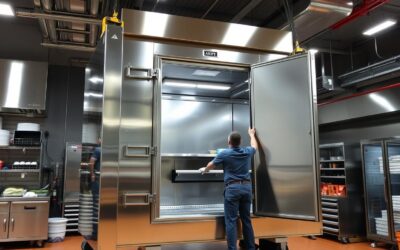
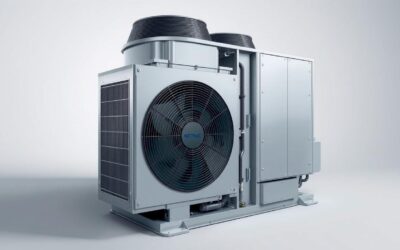
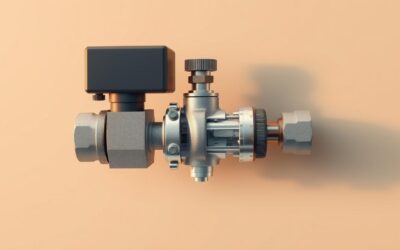
0 Comments